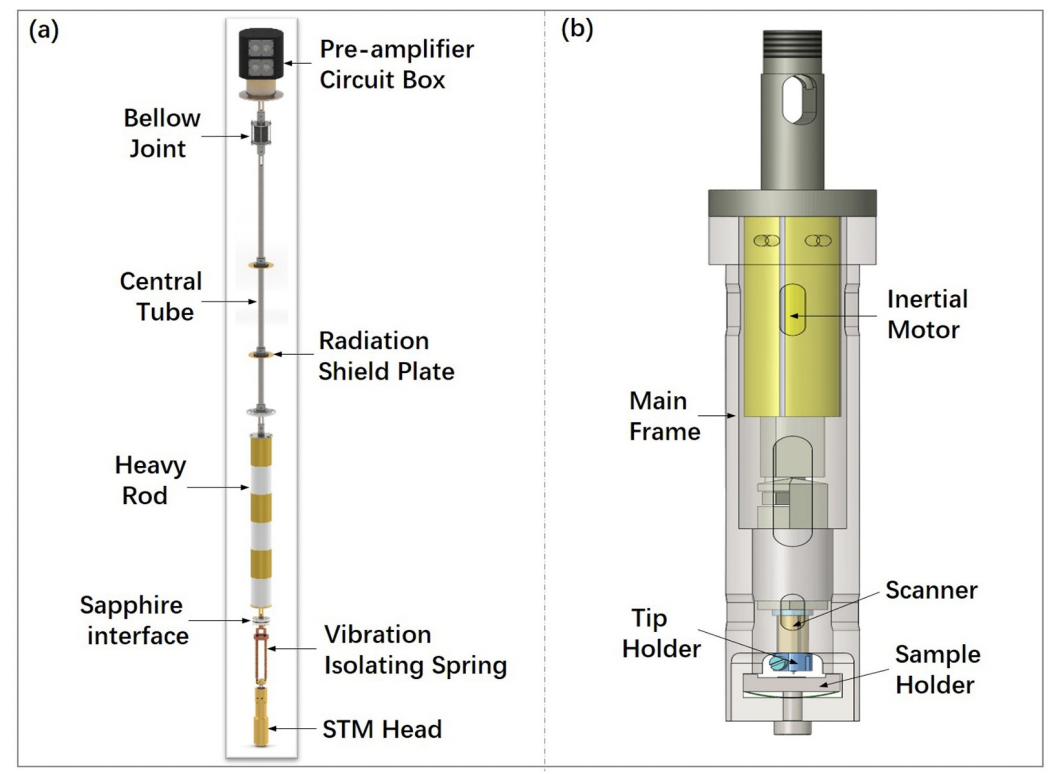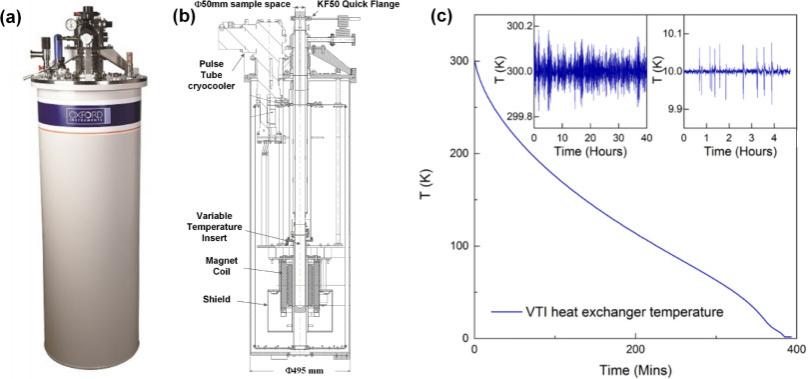Applications
 Part of the Oxford Instruments Group
Part of the Oxford Instruments Group
Expand
Collapse
The world's first Scanning Tunnelling Microscope measurement probe, suitable for cryofree superconducting magnets, was successfully developed by a team of scientists from the Chinese Academy of Sciences, led by Professor Qingyou Lu. The related research results were published in the journal Ultramicroscopy.
Scanning Tunnelling Microscope (STM), a representative of the scanning probe microscope family, is an important and unique test method in the field of basic scientific research. It has atomic resolution in real space and high energy resolution in momentum space and can be extended to a variety of test conditions (low temperature, strong magnetic field, light field, solution etc.). However, STM is extremely sensitive to even very weak disturbances such as external vibration. Therefore, the existing low-temperature and high-field STM equipment is mostly based on wet superconducting magnets with weak vibration and sound interference.

Fig. 1. Photograph of the probe-type STM and the section view of the STM head, in which the main parts are indicated.
The disadvantages are also gradually emerging, including, the equipment being highly dependent on the supply of liquid helium. Hence, the operating cost is also increasing due to the rising cost of liquid helium. The current trend is gradually shifting from wet magnets that rely on liquid helium, to closed-cycle cryogen-free magnets. Cryo-free magnets have been applied in many fields, such as transport measurements, NMR, and sample growth. It is still blank in the field of STM applications, mainly because of the super strong vibration and acoustic noise generated when the cryo-free superconducting magnet works.
Qingyou Lu's research is based on the 8T dry superconducting magnet TeslatronPT platform provided by Oxford Instruments NanoScience Shanghai Applications Laboratory. The variable temperature insert (VTI) equipped with the magnet can achieve 1.5-300K temperature control, and its sample cavity diameter is 50mm. The developed plug-in STM system includes a high anti-vibration STM mirror body, a shock-absorbing and heat-insulating probe and a high-performance controller. After testing, the STM can provide high-quality atomic resolution images of graphite, NbSe2 superconductors and other samples under the 8T magnetic field of the TeslatronPT platform and at the lowest temperature of 1.6K. Although the research is based on 8T dry superconducting magnets, it is technically fully applicable to cryogen-free superconducting magnets with higher magnetic fields.

Fig. 2 (a) and Fig. 2 (b) are photograph and cross-section drawing of the 8 T cryogen-free superconducting magnet system.
Fig. 2 (c) shows a typical cooldown curve of VTI heat exchanger from room temperature to base temperature. Typical temperature stability over a long period at 300 K and 10 K are presented in the insets.
See the full publication here.